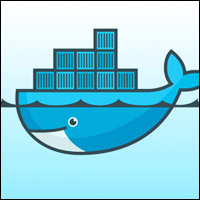
XenSource wants itsopen source Xen virtualization technology to win over large enterprise customers, and now the company is eyeing smaller, wider markets with new virtualization products aimed at Windows and more mainstream IT users.
On the heels of last month’s release of XenEnterprise, the hypervisor package for Linux and Windows server virtualization, XenSource this week unveiled two new members of the virtualization product family from the company: the XenServer for Windows and XenExpress, a free Xen virtualization starter solution.
“We’re trying to move the market to volume,” XenSource Chief Technology Officer Simon Crosby told LinuxInsider, referring to astrategy focused on distribution, Linux and other partners. “XenSource is trying to turn on volume virtualization.”
The Wider World of Windows
The virtualization family would support a variety of hardware, thanks to extensive code contributions to the Xen open source community project from chip makers Intel and AMD.
Xensource is trying to make virtualization more appealing to individuals, as well as to companies — which now have a migration path from the simpler, free XenExpress to its XenEnterprise data center solution.
XenSource sees a trend of consolidation among mainstream Windows-based servers, said Crosby. “This is essentially Xen packaged for Windows,” he added.
XenExpress, which targets developers and enthusiasts, is a single machine virtualization platform with the featuresand performance of XenEnterprise with a bundled management console, the company said.
The software is a free download from XenSource with a license for one server and four concurrent virtual machines.
Partner Play
XenSource’s server virtualization solution is not as complete asVMware, which dominates the market, according to Crosby. Instead, XenSource has a partnership focus — looking to Microsoft and leading Linux vendors to integrate Xen technology into their own solutions.
“Our intention is to get there with partners in the ecosystem,” he said, referring again to “volume virtualization.”
Crosby complained the virtualization market has been getting hung up on VMware’s approach, which typically requires a storage upgrade and additional support fees.
“We don’t think that’s a reasonable proposition for a volume market,” he said.
With its platform partners — which include Linux leaders Novell and Red Hat — XenSource is aiming to move the virtualization market from a single stack proposition to a platform with solutions, Crosby explained, calling it “a game changer” for the firm’s larger foe, VMware.
“We’re clearly focused on the success of these partners of ours and a quicker rate to data center deployment,” he said.
Pieces or Pie?
XenSource has succeeded in winning integration with operating systems and virtualization solutions from Linux vendors and Microsoft; however, it remains to be seen how much synergy will come from XenSource and the newly partnered Novell and Microsoft, Gartner Research Vice President George Weiss told LinuxInsider.
Although he predicted success for XenSource on x86 servers, Weiss indicated that Xen is still competing with some of its partners in the virtualization space.
The established vendors should clearly define their own pieces of the software virtualization pie and present a holisticsolution to the market. This, however, does not currently appear to be their strategy, Weiss noted.








































